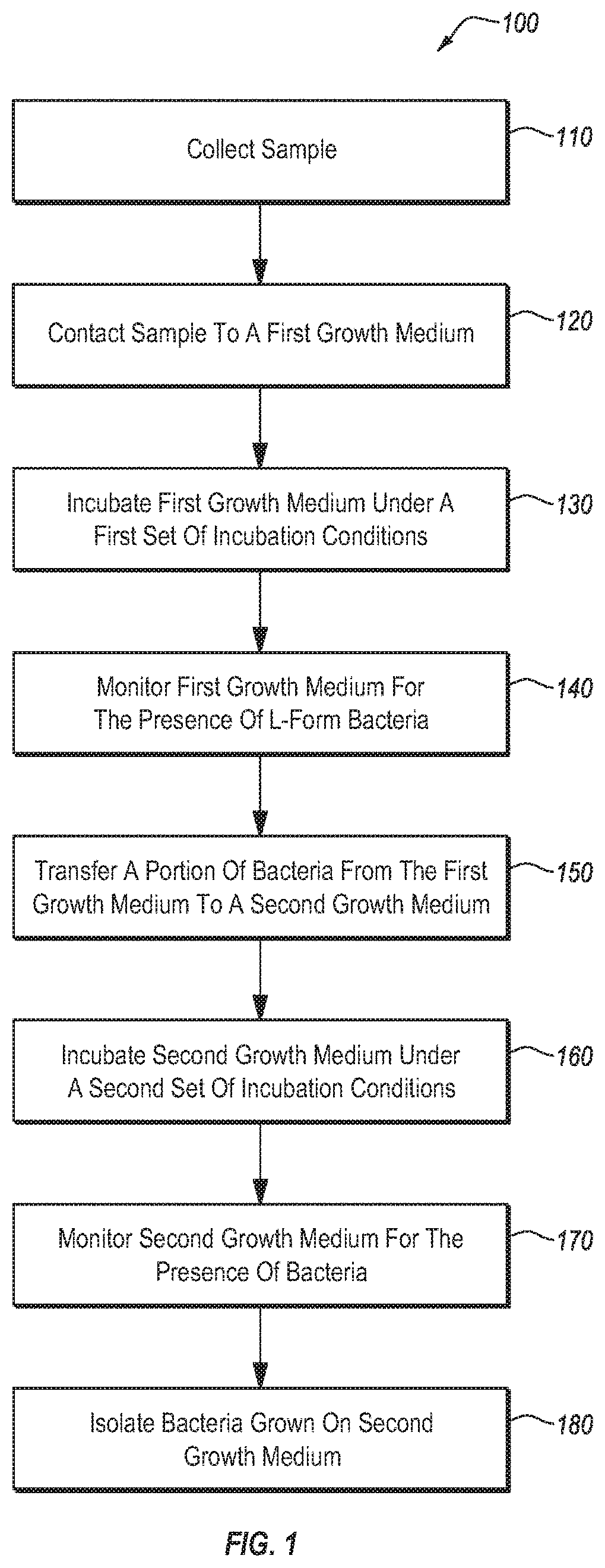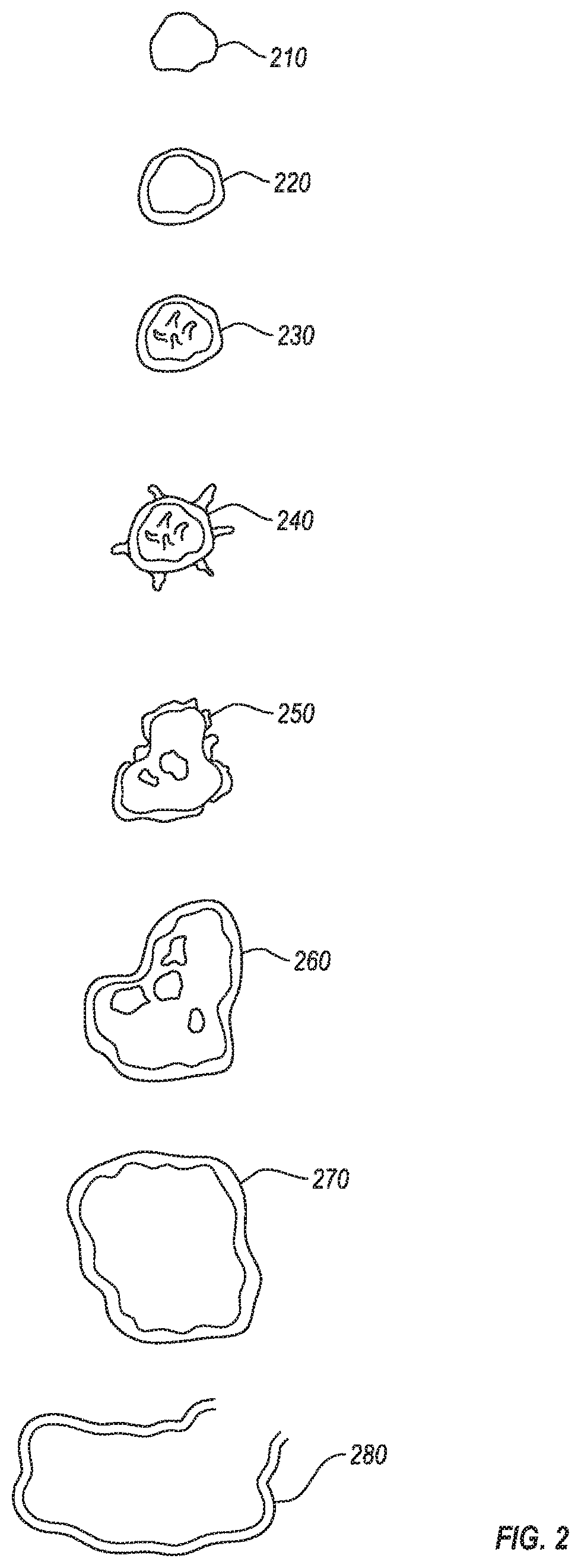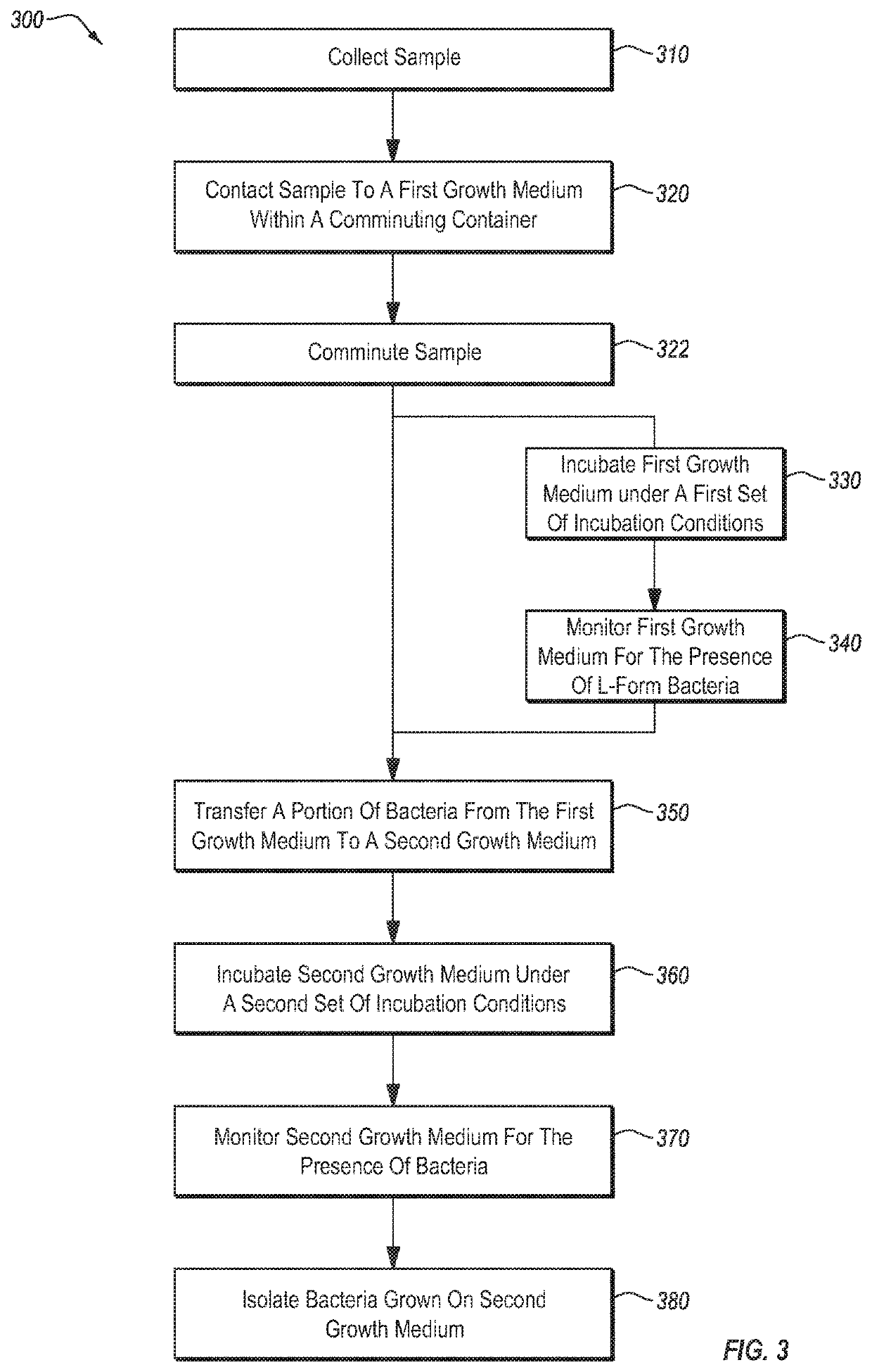Diagnosis and treatment of endometriosis by screening for l-form bacteria
a technology of endometriosis and l-form bacteria, which is applied in the direction of antibacterial agents, instruments, drug compositions, etc., can solve the problems that endometriosis may often go undetected, and achieve the effects of reducing patient/subject anxiety, saving time, and saving costs
- Summary
- Abstract
- Description
- Claims
- Application Information
AI Technical Summary
Benefits of technology
Problems solved by technology
Method used
Image
Examples
example 1
[0126]Over 500 separate blood samples were collected (about 120 of these were from individuals who gave more than one sample). More than 30 separate synovial fluid samples and 1 lymphatic fluid sample were also collected. For each sample, about 0.5 ml or less of the sample (about 2 drops) was added to a tube containing 10-15 ml of bovine serum and a tube containing 10-15 ml of BHI broth. The inoculated tubes were incubated at 27° C. Development of L-form culture was monitored by preparing wet mount live slides daily. Samples were monitored for a period of up to 30 days. Samples that showed indications of L-form bacterial growth were typically incubated for at least 48 hours, and typically began to show signs of progressive growth within 48-72 hours. L-form bacteria were not observed to progress to a CWS form while within the broth.
[0127]For samples in which L-form bacterial growth was detected, the broth was used to inoculate a variety of agarose plates (mannitol salt, BHI, tryptic ...
example 2
[0129]A comparative study was conducted to compare a standard culturing process to the process of Example 1. Each sample was divided into two portions. The first portion was used to directly inoculate two nutrient agars, which were then incubated and monitored for growth. The second portion was used as inoculant in the L-form growth protocol of Example 1. Results of the comparative study are shown in Table 1 (samples which showed no growth in either protocol are omitted).
TABLE 1Bacteria cultured Bacteria cultured Sample via directvia process ofTypeinoculationExample 1BloodNo growthAcintobacter genomospecies 15tuMicrococcus luteus AUnknown RodBloodBacillus pumilus / Bacillus pumilus / safensisStaph. capitis ss Bacillus pumilus / safensisBloodNo growthBacillus plakortidisBrachybacterium sacelii (26C)Unknown BacteriaBloodNo growthBacillus pumilus / safensisBloodNo growthBacillus pumilus / safensisBloodNo growthBacillus lichenformisBloodNo growthBacillus pumilus / safensisBloodNo growthBacillus pum...
example 3
[0131]Of the subjects tested using the culturing process described in Example 1, 10 subjects were found to harbor the Microbacterium maritypicum strain DSM 12512. Of the 10 subjects with this Microbacterium strain, 8 were female, and 7 of the 8 had indicated in a health questionnaire that they suffered from endometriosis or fibroid tumors of the ovaries.
PUM
| Property | Measurement | Unit |
|---|---|---|
| Fraction | aaaaa | aaaaa |
| Fraction | aaaaa | aaaaa |
| Fraction | aaaaa | aaaaa |
Abstract
Description
Claims
Application Information
 Login to View More
Login to View More - R&D
- Intellectual Property
- Life Sciences
- Materials
- Tech Scout
- Unparalleled Data Quality
- Higher Quality Content
- 60% Fewer Hallucinations
Browse by: Latest US Patents, China's latest patents, Technical Efficacy Thesaurus, Application Domain, Technology Topic, Popular Technical Reports.
© 2025 PatSnap. All rights reserved.Legal|Privacy policy|Modern Slavery Act Transparency Statement|Sitemap|About US| Contact US: help@patsnap.com



